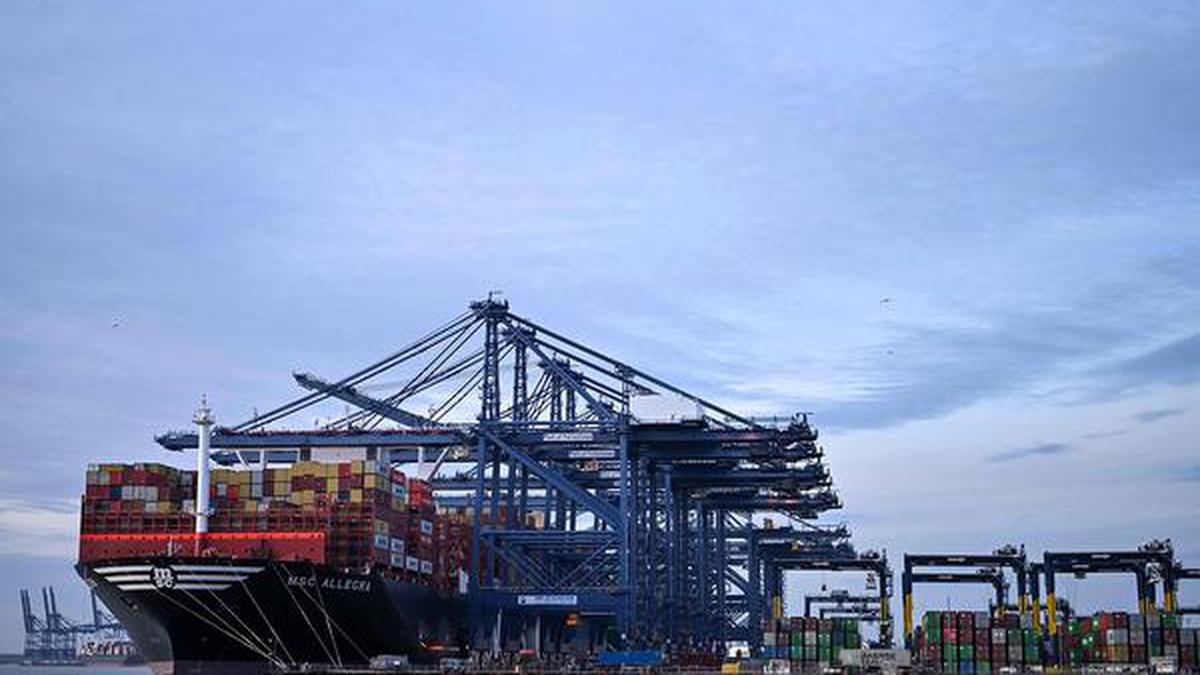Car factories have idled in Belgium and Germany. Spring fashion lines are delayed at a popular British department store. A Maryland company that makes hospital supplies does not know when to expect parts from Asia.
Attacks on ships in the Red Sea are delivering another shock to global trade, coming on top of pandemic-related logjams at ports and Russia’s invasion of Ukraine.
Attacks in the Red Sea by the Houthis may hit India’s oil trade | Data
Houthi rebels in Yemen, seeking to stop Israel’s offensive against Hamas in Gaza, are attacking cargo ships plying the waters connecting Asia with Europe and the U.S., forcing traffic away from the Suez Canal and around the tip of Africa. The disruption is causing delays and driving up costs — at a time when the world has yet to vanquish a resurgence of inflation.
“What has happened right now is short-term chaos, and chaos leads to increased costs,” said Ryan Petersen, CEO of supply chain management company Flexport. “Every ship that gets rerouted has 10,000 containers on it. It is a lot of emails and phone calls getting made to replan each of those container journeys.” Adding to the bedlam in global shipping is what Mr. Petersen calls a “double whammy”: Passage through another crucial trade corridor — the Panama Canal — is restricted by low water levels caused by drought. And shippers are in a rush to move goods before Chinese factories shut down for the February 10-17 Lunar New Year holiday.
Growing threat
The threat grows considerably the longer the war in Gaza drags on. Disruption to Red Sea trade lasting a year could surge goods inflation by up to 2%, Mr. Petersen says, piling on pain while the world already struggles with higher prices for groceries, rent and more. That also could mean even higher interest rates, which have weakened economies.
For now, Man and Machine in Greater Landover, Maryland, is awaiting a shipment from Taiwan and China. It has been one setback after another for the company, which makes washable keyboards and accessories for hospitals and other customers.
Founder and CEO Clifton Broumand usually gets a shipment of components about once a month, but the latest delivery, which departed Asia four weeks ago, is delayed. “It is annoying, and it is interesting. I think our customers, everybody understands. This is not like, Why didn’t you plan this?’ — who knew?” he said. “We call our customers and say, ‘Hey, it’s going to be delayed. This is why it is.’ Nobody likes it, but it’s not going to kill anybody, it’s just another frustration.” Other industries are seeing similar hassles.
Electric carmaker Tesla has to shut down its factory near Berlin from Monday to February 11 because of shipment delays. The Chinese-owned Swedish car brand Volvo idled its assembly line in Ghent, Belgium, where it makes station wagons and SUVs, for three days this month while waiting for a key part for transmissions.
Production at a Suzuki Motor Corp. plant in Hungary stopped for a week because of a delay in getting engines and other parts from Japan.
The British retail chain Marks and Spencer warned that the turmoil would delay new spring clothing and home goods collections that were due in February and March. Chief executive Stuart Machin said the Red Sea trouble was “impacting everyone and something we are very focused on”.
Roughly 20% of the clothes and shoes imported into the U.S. arrive via the Suez Canal, said Steve Lamar, CEO of the American Apparel and Footwear Association. For Europe, the impact is even bigger: 40% of clothes and 50% of shoes traverse the Red Sea.
“This is a crisis that has global implications for the maritime shipping industry,” Mr. Lamar said. As of January 19, Flexport says, almost 25% of global shipping capacity is being or will be diverted from the Red Sea, adding thousands of miles and a week or two to trips.
Rising costs
The cost of shipping a standard 40-foot container from Asia to northern Europe has surged from less than $1,500 in mid-December to nearly $5,500. Getting Asian cargoes to the Mediterranean is even costlier: almost $6,800, up from $2,400 in mid-December, according to the freight booking platform Freightos. But things could be worse. At the height of supply chain backups two years ago, it costed $15,000 to ship a container from Asia to northern Europe and nearly $14,200 to take one from Asia to the Mediterranean. “In terms of supply chain disruptions, we are not even close to what was happening during the pandemic,” said Katheryn Russ, an economist at University of California, Davis.
In 2021 and 2022, American consumers, stir-crazy from COVID-19 lockdowns and armed with government relief checks, went on a spending spree, ordering furniture, sports equipment and other goods. Their orders overwhelmed factories, ports and freight yards, leading to delays, shortages and higher prices.
Things are different now. After that supply chain mess, shipping companies expanded their fleets. They have more ships to cope with shocks.
Jan Hoffmann, a UN shipping expert, warned on Thursday that Red Sea shipping snags posed a risk to global food security by slowing the distribution of grain to parts of Africa and Asia, which depend on wheat from Europe and the Black Sea area.
It would be even worse if the conflict in West Asia widens and drives up oil prices, which are now lower than they were the day before Hamas attacked Israel on October 7.
For now, companies are muddling through.

